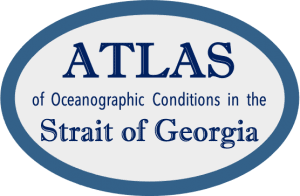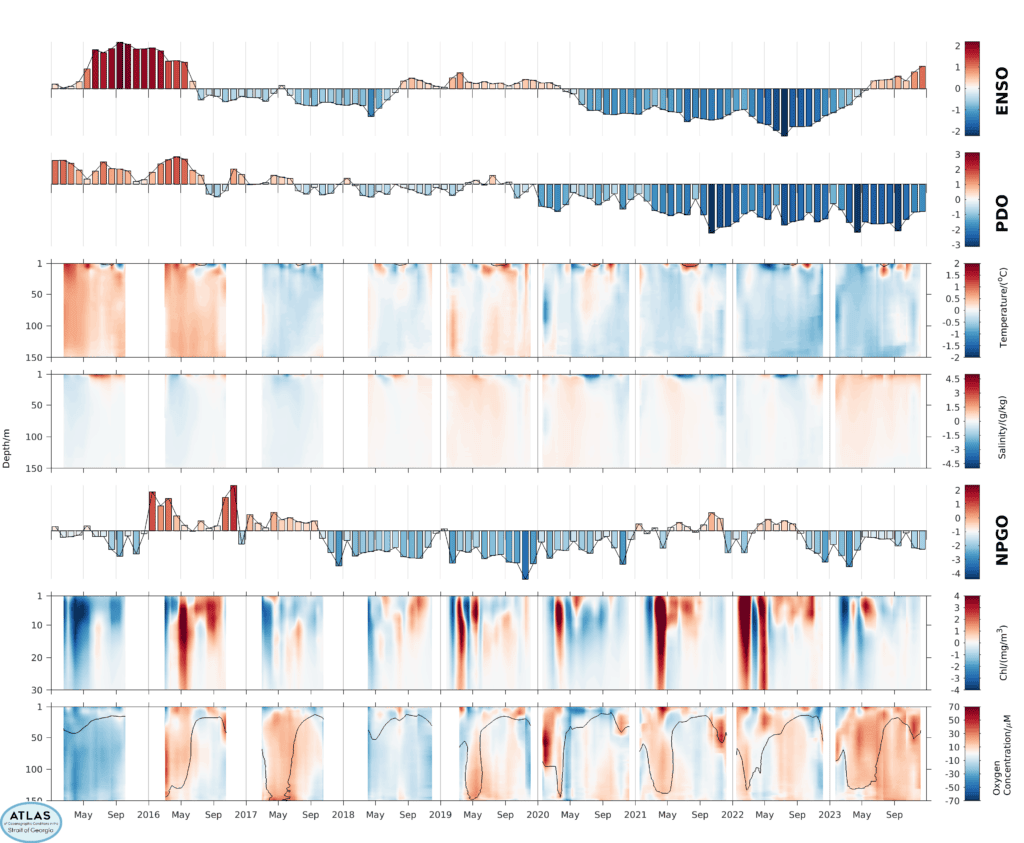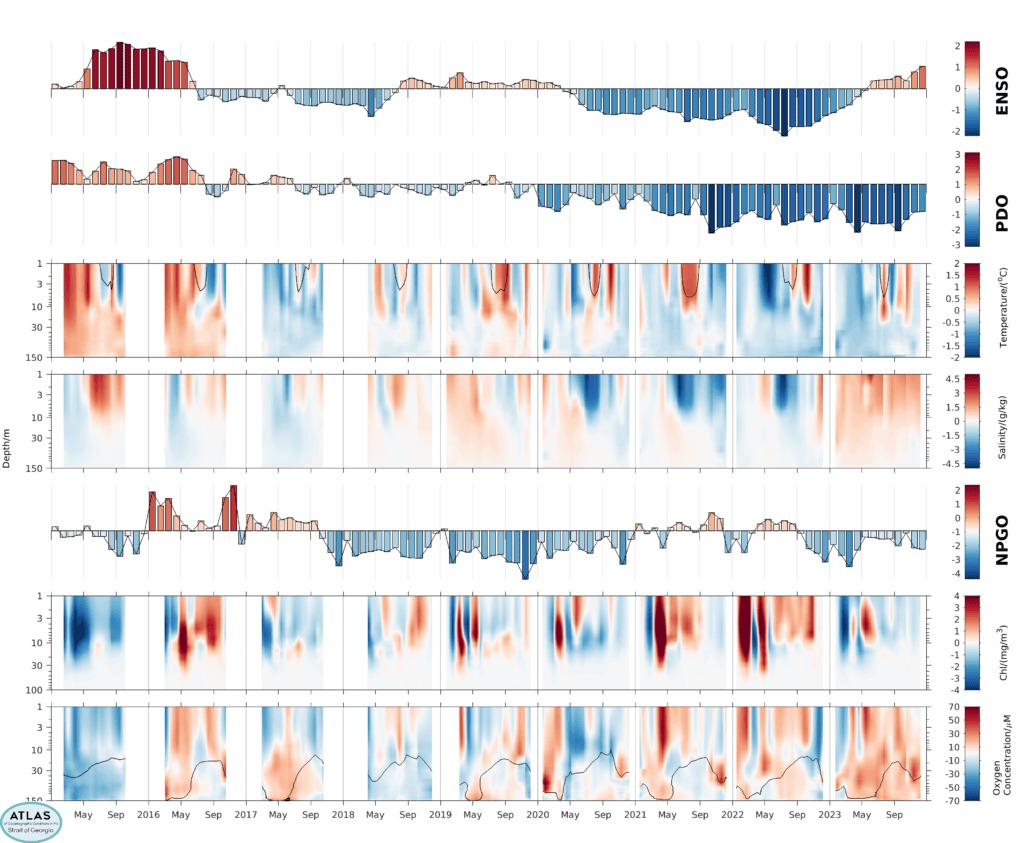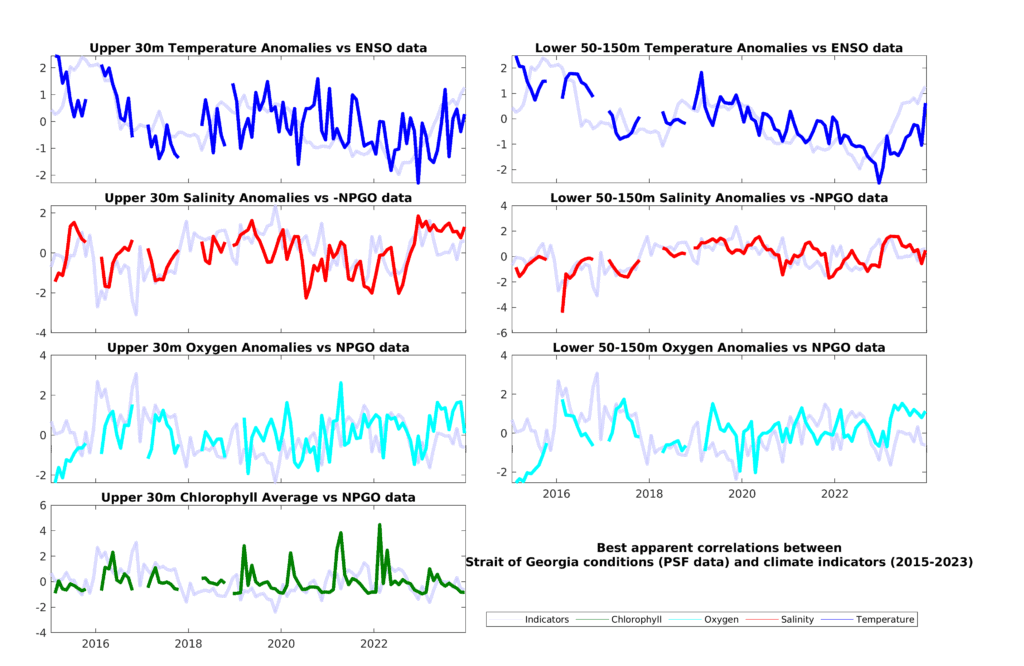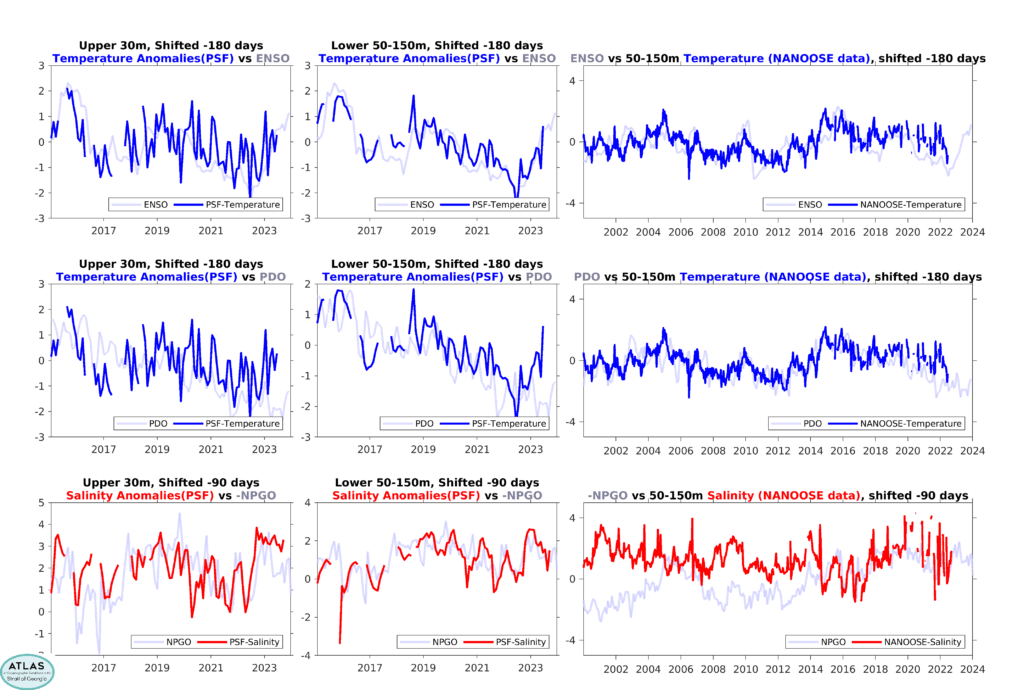Climatology comparison with ENSO, PDO and NPGO
climatology comparison with enso, pdo and npgo
Although there is a large annual cycle in Strait of Georgia water properties, there are also year-to-year changes that are correlated with large-scale changes over the Pacific. Three of these large-scale patterns are known:
El Nino/Southern Oscillation (ENSO).
ENSO is the most important indicator for global climate disruptions that can last for several seasons, and is related to processes occurring in the equatorial Pacific. Over BC land areas, positive ENSO values usually indicate warmer temperatures, with weaker winter snowfall (more of which falls as rain) due to changes in wind patterns, but in coastal areas may be associated with weaker upwelling. Negative ENSO conditions usualy imply the opposite. Here we show a Multivariate ENSO Index.
Pacific Decadal Oscillation (PDO)
The PDO is the most important mode of variability in the North Pacific. It is a multi-decadal cycle in temperature and sea-surface height conditions. Positive index conditions are generally associated with warmer waters in the eastern pacific (and colder waters in the western Pacific), with the opposite in negative index conditions.
North Pacific Gyre Oscillation (NPGO)
The NPGO is the second most dominant mode of sea-surface height variability in the north-east Pacific (related to changes in the gyre circulation pattern). It appears to be correlated with salinity and nutrient variations (and hence in Chlorophyll concentrations) in Alaska and the California coast.
Here we compare our "Red/Blue" climatology indicators (with red meaning values above the seasonal climatology, and blue values below the seasonal climatology) with indexes for these 3 climate variations.
Strait of Georgia condition, referencing enso, pdo and npgo
best apparent correlations
In oder to make predictions about future conditions, we want. to find how Strait of Georgia conditions are linked to different climate indicators.
Comparing to the PSF data (2015-2023), the Strait of Georgia's Temperature anomalies has the most apparent correlations with ENSO data, especially in the lower 50-150 m, with a lag of about half a year. This probably reflects differences in upwelling conditions on the outer coast, delayed by the residence time for water in the Strait.
Salinity and dissolved oxygen anomalies (and to a lesser degree Chlorophyll amounts), on the other hand, seem most strongly correlated with the NPGO.
Although the CitSci dataset only began in 2015, temperature and salinity variations in the central Strait from 2000-2022 can be investigated using the long-term monitoring at the Nanoose Test Range. While the temperature from 2015-2023 correlates better with ENSO, PDO fits better with the temperature in the longer period of time, especially when the temperature anomalies were shifted approximately half year earlier. For salinity, while -NPGO fits well for data in 2015-2023, there isn't an apparent correlation with data earlier in 2000-2015.



